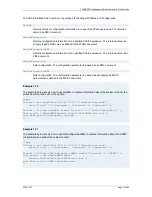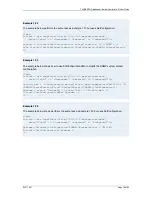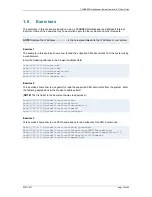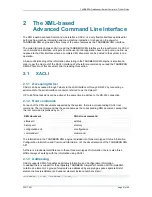
TANDBERG Gatekeeper/Border Controller API User Guide
D14172.01
page 12 of 84
Example 1.11
The command
Dial
is defined to take five parameters. Only the
callSrc
and
callDst
parameters
are required; this is specified by the attribute
required
. The value domain for the parameters is
referenced by the attribute
valueSpaceRef
.
<Command>
<Dial item="1">
<callSrc item="1" required="True"
valueSpaceRef="/ValueSpace/MandatoryAlias[@item='1']"></callSrc>
<callDst item="1" required="True"
valueSpaceRef="/ValueSpace/MandatoryAlias[@item='1']"></callDst>
<Bandwidth item="1" required="False"
valueSpaceRef="/ValueSpace/BandwidthPerCall[@item='1']"></Bandwidth>
<EncryptionMode item="1" required="False"
valueSpaceRef="/ValueSpace/EncryptionModes[@item='1']"> </EncryptionMode>
<EncryptionType item="1" required="False"
valueSpaceRef="/ValueSpace/EncryptionTypesSpace[@item='1']">
</EncryptionType>
</Dial>
</Command>
To issue a command, the command structure is posted back to the system together with values for the
various parameters. Optional parameters can be omitted when posting the structure back to the
system.
Example 1.12
To place a call from Alice to Bob the user can simply post the following XML structure to the system:
<Command>
<Dial item="1">
<callSrc item="1">[email protected]</CallSrc>
<callDst item="1">[email protected]</CallDst>
</Dial>
</Command>
When issuing commands, the system will return an XML structure in response. The response structure
will have the same name as the command issued, but it will be suffixed with
Result
. All commands
will have an attribute named
status
, stating whether the command was accepted or not. If a
command is not accepted, the response structure will contain a
Cause
code. If the command is
accepted, the response structure may contain information relevant for the specific command.













































